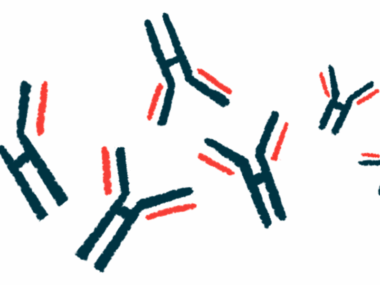Thymectomy is effective in children, adolescents with MG: Study
Patients who had surgery used less medicine, healthcare resources
Written by |

A thymectomy, or surgical removal of the thymus gland, was effective for children and adolescents with myasthenia gravis (MG), as indicated by lower medication use and healthcare utilization after surgery, a study reports.
Demographic characteristics like age, sex, ethnicity, insurance payer type, residential region, and the surgical approach used, didn’t influence the treatment’s effectiveness.
These findings suggest that a thymectomy could be considered earlier in treating children and adolescents with MG to minimize the negative impact of the disease and the need for utilizing healthcare, said the researchers in “Measuring the Efficacy of Thymectomy for Pediatric Myasthenia Gravis Across Tertiary Children’s Hospitals,” which was published in Pediatric Neurology.
MG is driven by self-reactive antibodies that interfere with communication between nerves and muscles. The autoimmune condition is often associated with tumors in the thymus, a small gland in the upper chest that plays an essential role in the immune system, including in the maturation of immune T-cells.
Surgically removing the thymus is thought to reduce the production of these antibodies, particularly if a tumor is present. In adults with MG, a thymectomy can raise remission rates and lower medication use.
Even though up to 80% of young people with MG ultimately undergo a thymectomy, there’s a lack of studies investigating its effectiveness, leading researchers at the Northwestern University Feinberg School of Medicine to examine its efficacy in 238 children and adolescents younger than 18 diagnosed with MG. A group of 213 age- and sex-matched children and adolescents with MG who hadn’t had the procedure were used for comparison.
Comparing thymectomy, non-thymectomy patients
The thymectomy patients were predominantly white, from the southern U.S., and covered by private insurance. The non-thymectomy patients were more likely to be Black or Latino, from the Midwest, and have public insurance.
The study’s main goal was to evaluate the surgery’s effectiveness by comparing differences in using MG-related medications in the year before and after the procedure. Differences in the number of hospital admissions, emergency visits, and healthcare costs related to MG in the year before the surgery to three years after were also assessed.
The annual median total number of MG-related medication doses after a thymectomy dropped by 13, the results showed. The median number of MG-related admissions dropped significantly by 2.
Regarding specific MG treatments, a decrease in doses was seen for anti-inflammatory corticosteroids and acetylcholinesterase inhibitors, as well as for plasma exchange and intravenous immunoglobulin (IVIG) sessions.
Costs associated with MG-related admissions and medications were lower after surgery, with median savings of $5,292.
Patients in the non-thymectomy group had no identified differences in any of the outcomes during the same study period.
The approach used by surgeons was not linked to differences in the procedure’s effectiveness, nor were patients’ age, sex, ethnicity, insurance payer type, residential region, and the hospital where the surgery was performed.
“We demonstrate that thymectomy is efficacious for the treatment of pediatric MG using a novel measurement of MG-related medication burden and healthcare utilization as proxies for disease severity,” the researchers wrote. “Surgical approach and patient demographics do not appear to influence the success of treatment. These findings suggest that thymectomy could be considered earlier in the treatment algorithm for pediatric MG to avoid additional morbidity and healthcare utilization.”







Leave a comment
Fill in the required fields to post. Your email address will not be published.